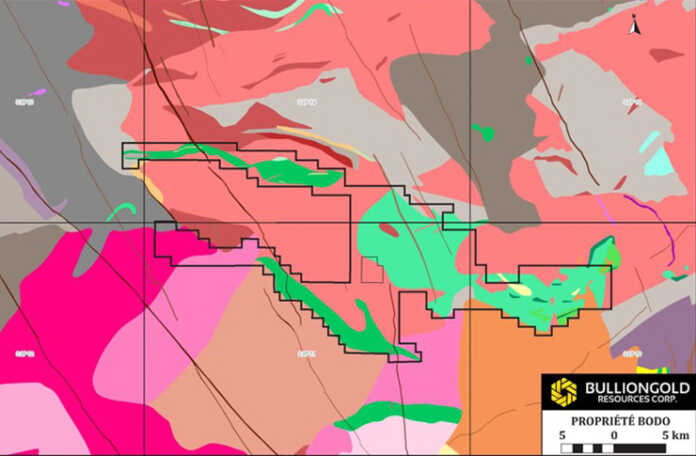Composed of 682 cells, the Bodo SM project was acquired based on its potential to contain spodumene pegmatites, the presence of a bedrock largely denuded of vegetation and its location which offers very good accessibility due to its proximity to the main road leading to Chibougamau. The geological environment of Bodo SM is similar to that found in the known geological zones containing lithium in the western part of James Bay. The lithium deposits discovered in the last 10 years have been in greenstone belts in contact with huge granite intrusions. The company has thus staked one of the last available greenstone belts that are easily accessible.
The Bodo SM property covers most of a set of greenstone bands in contact with large granite batholiths and pegmatite granodiorites. The three main greenstone units are made up of amphibolized basalts with a length varying from 20 to 28 km by a width ranging from 2.23 to 8 km. The various granite and granodiorite batholiths bordering these volcanic units would contain, according to the MERN, several pegmatite dykes of different thicknesses, but no serious work has been done to identify the minerals in those visited and mentioned in the RG-144 report dating from 1971. Minerals such as biotite, muscovite or tourmaline have however been noted in the granites visited. Pegmatites containing minerals such as spodumene, lepidolite and petalite are often associated with mica minerals such as biotite and muscovite, as well as silicate minerals such as tourmaline. Pegmatites are usually formed from silica-rich magma that has crystallized slowly, allowing rare minerals to crystallize. Other minerals searched for in association with the potential presence of lithium are beryl, rubidium, and cesium.
ALS Goldspot Discoveries will also participate in the analysis of current and future available data in order to delineate the best targets to prospect as soon as the property becomes accessible in the spring of 2023.
Historically, there has been very little exploration work done in this area. There is therefore not a lot of geological and geophysical data except those mentioned in the various MERN reports. There is a Cu-Au-Ag and Mo showing (Rivon-Ouest) on the eastern edge of the property.
The claims acquired from a group of prospectors were acquired in return for 1,100,000 shares of The Company. No royalty was granted to this group.
![]()








